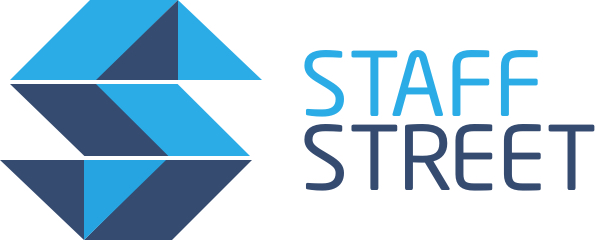If you’re not caught up, just so you know, there’s a massive transformation underway. Companies are rapidly seeking hybrid structures of operation, combining digital and brick-and-mortar practices, to adapt to the present challenges. But beyond the structural integration, it’s really the strategies of openness and collaboration spelling out the difference in success. However, this openness and “new dependence” on online networks comes with very real risks to organization and customer data security.
So, in choosing the right people work with, companies have to figure out how to protect critical organizational and customer data? How do you build trust and practice safety in today’s untrusting world?

In this article we’re going to help you figure that out by discussing
- How to Identify and Assess Security Threats to Sensitive Company Data
- Which Responses are Innovative and Flexible
- How to Enforce Data Policy Standards when you Outsource
What qualifies as sensitive information?
Organizations and businesses will have varying definitions about which information requires protection. But even before companies collect client and customer data, the Federal Trade Commission suggests developing a strong data privacy policy.
As a company, you need to ask yourself:
- What kind of information should they ask their customers and clients for?
- For what critical service function are these personal information for?
- How are they stored and who has access to them?
- What are the possible risks in collecting this type of information?
- How can enforcing customer data security protocols reduce risks?

the greater the responsibility to ensure its protection.
Identifiable personal information includes:
- name
- birth date
- home and work address
- contact details
- social security number
- tax records
Needless to say, the more detailed the information, the more sensitive it is.
However detailed businesses choose to be, ultimately, they all have to comply by the standards set by Gramm-Leach-Bliley Act 2003. In fact, the law indicates that organizations are liable for the safe use, storage, and disposal of the data they acquire. Doubly so if you work with third-party companies who require access to your information database.
After identifying the kind of information handled by the company, it’s possible to evaluate the quality of cybersecurity measures. According to David Forman, the Global Accreditation Manager at Coalfire ISO, the standards for cybersecurity is the intersection of three principles: confidentiality, integrity, and availability.
Evaluating your company’s level of information security begins with asking:
- Is the information protected from unauthorized access and changes?
- Are authorized users able to access the systems and resources they need to properly handle the information?
What are the most common threats to customer information?
There are certainly plenty of threats and risks to customer data security.
Externally-sourced threats.

For example, unauthorized hacking, phishing schemes, and spyware can compromise a company’s database from the outside. Gaining unauthorized access to sensitive company and customer data can lead to system breakdowns, financial and identity theft, and grave misuse of information. In 2016, in one of the most high-profile cases of information theft, hackers attacked a hospital with ransomware and held them hostage over stolen patient data.
Internally-sourced threats.

At the same time, companies may unintentionally create or abet the very risks to their information database. Failure to identify sensitive customer data and understand the gravity of keeping them secure, inadequate actions to educate employees and deploy protection and monitoring systems, such as firewalls, encryption, or device control strategies, can expose sensitive databases to external threats.
Deloitte says that if customer data is compromised, whether through attacks on poorly protected databases or through the mishandling of personal information, it can certainly lead to reduced confidentiality.
In that regard, companies have to keep in mind that privacy hygiene requires different resources, according to Forman. In other words, it takes a collaborative effort to protect customer information privacy and other sensitive data.
What are innovative responses to cybersecurity threats in 2020?
The Federal Trade Commission suggests developing a strong data privacy policy, which requires the collaboration of stakeholders and the integration of security measures into the overall business structure.
Since the threats to customer data security tend to arise from different sources, the responses require all stakeholders of the data to be, ideally, involved in its protection. Starting with the organization, strong data policies must be developed. Furthermore, companies need to integrate these policies in the way they do business, not just as an emergency response. According to experts, the best practices include individual, systemic and organization-wide steps.

Responses at the Individual Level
- Firstly, companies need to help their employees develop individual discipline with respect to how they handle and protect customer and client data
- Also, employees should apply extra caution in opening emails or links that may have harmful content
- Thirdly, they must abide by guidelines on how to retrieve, store, secure, handle, and dispose of critical customer data
- Lastly, employees have to vigilantly report any discrepancies or poor information security actions
System Upgrades
- Organizations must invest in strengthening their company’s database and information systems by installing firewalls, using encryption software, and centralizing monitoring systems
- Businesses have to clearly outline and limit access to sensitive customer data. Remember, the greater the information access, the bigger the responsibility
- Companies should establish an office or outsource functions solely dedicated to auditing and addressing security concerns, especially ones that are beyond the regular employee’s pay grade.
Company-level Actions
- Develop thorough guidelines for building business alliances and include a robust data privacy policy in the criteria
- Be transparent about how you store, retrieve and use sensitive personal information
- Provide opt-out options and explain how you dispose of client and customer information
The inclusion of all stakeholders allows companies to stay resilient and flexible in the face of cybersecurity threats. As businesses increasingly shift to an online workspace, the exposure to cybersecurity threats are only going to grow. So, it’s important that businesses integrate the security mindset into their entire business process.
Key questions:
- Who are the important stakeholders of the information database?
- Who has access to them and what guidelines and tools do they have to ensure this access remains secured?
- How is access authenticated?
- When it comes to system and network health, who is involved?
- Are there systems in place to detect breaches and threats to customer data security?
How can businesses secure customer data when outsourcing?
The chaotic year of 2020 hastened the transition into an increasingly online, increasingly digital operation for companies and businesses. As a result, network alliances and outsourcing are becoming important features of this less physically-bounded workspace. Therefore, companies have to make sure that third-party companies that need access to sensitive customer and client data must comply with the privacy data laws as well.
According to Flatworldsolutions, an outsourcing company, companies have to be clear and transparent about their policy expectations going in. Some questions they can seek assurance for are:
- What are the third-party or outsource company’s standards on how to handle customer information security?
- Are they able to meet the requirements for optimum security, such as weekly updates and regular systems monitoring?
- What security systems are in place to secure the kind of information you’re giving them access to?
Forman recommends seeking outsourcing companies that have acquired credentials from globally recognized assurance programs, like the ISO. This assures that the third-party has incorporated the best and standard practices of information security into their business practices.

Additionally, many information security experts underline making the rule of least privilege a discipline, ensuring that access to client and customer information is secured and restricted. Thus, companies have to strike a balance between protection and making sure that those who need the infomration have justifiable access to be able to provide good customer service and support.
Ultimately, transparency and communication are not only something companies need to practice when they choose a third-party vendor, but they are also standards they must seek from their alliances. Anything less could make organizations liable since laws like the European law extends standards and rules to third-party companies.


Pingback: How outsourcing improves your business, from - Staff Street